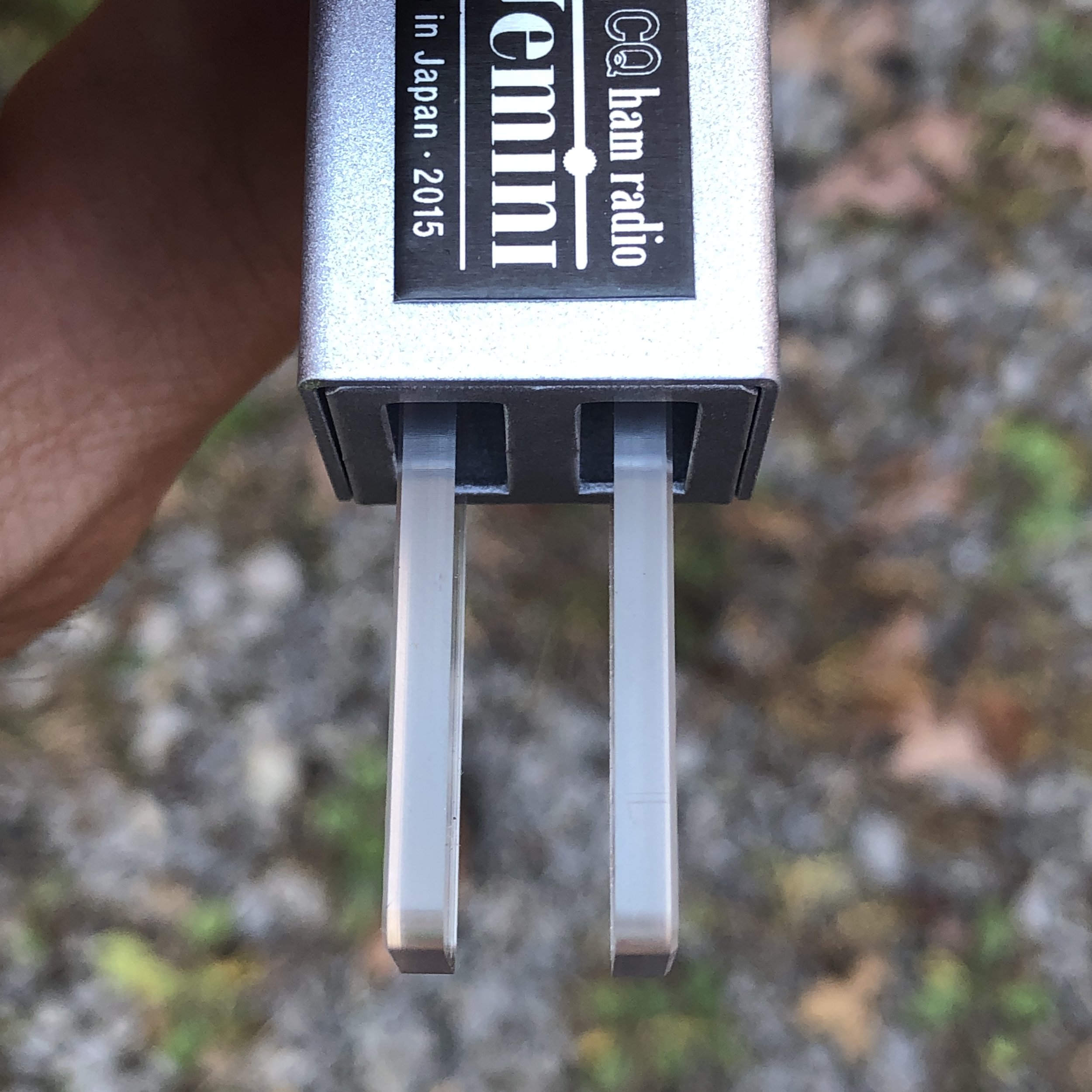This is still the driveway for the original family that still lives on the property. It is also the entrance to the historic site as well. I could live with this being the driveway to my house, how about you?
Today I had my first taste of a deliberate QRM attempt on my activation. At least that is what I thought it was when it happened. I was operating on 14.061Mhz and all at once there was a station sending endless dashes on top of my activation.
I was telling Teresa what had happened and she asked if I had considered that it could have been someone with a broken key that was not aware or had pushed their paddle up against something and didnt realise it. You know, we are so quick to judge, it did persist long enough though, that I moved up to 14.061.5 to get clear of it and resumed operations unimpeded.
This got me to thinking, we want to think it is some LID just holding down the key to be annoying, but it could have honestly been a legit mistake by a hunter who was on freq and might have had to goto the door for something and in their haste to get up, they slid the logbook over against the key and since they might have also been wearing headphones, they couldnt hear it sending non-stop dashes over the air. I mean, it could happen…maybe. It could also just as easily have been someone who has a sked on that freq every day at that time and they dont want to move for some reason. We have no real way of knowing unless they tell us.
With CW, this is much harder to decipher since you normally dont hear music or some other non-sense on frequency. It will be a “ditter”or something like that. I still made my activation today with 23 QSOs in the log before going QRT and doing some sight seeing with the wife.
I am starting to enjoy activating different parks, it is interesting when you see different people and they ask what you are doing. I talked with a couple of different park employees and they were very positive when I showed them what I was doing and how my rig was basically a zero impact setup. One actually joked that I should take a look at THEIR radios and see why they cant talk across the park! LOL So word is starting to propagate about our POTA hobby and the response I have gotten so far has been positive. I didn’t think to get a photo with a park ranger for the blog…next time I will remember.
The park has some interesting ruins on site and we walked around and saw them while we was there. It is a really interesting location if you are in the Savannah area with s radio and some time on your hands, it is worth a look. It does have a day use fee though so be prepared for that if you are going into the area, you part to enter per person.
Anyhow, you can always tell if I am activating the park, just look at what way I am parked in the space. lol. I back into the space so I can use my hamstick with the radials run into the grass. I operated today on the truck rear lid as a table, it worked great. I used the IC-705 and weather worked with me too. I am looking forward to seeing what parks I find myself near in the not to distant future with my radio in the truck… I now find myself looking at the idea of rotting a coax into the cab along the chassis so I only need to deploy the antenna and get back in the truck where it OSS warm…LOL It is always something…
Like this post if you enjoyed it and let me know if you have ever had to work around a problem on the air.
72
WK4DS
David













































































































































